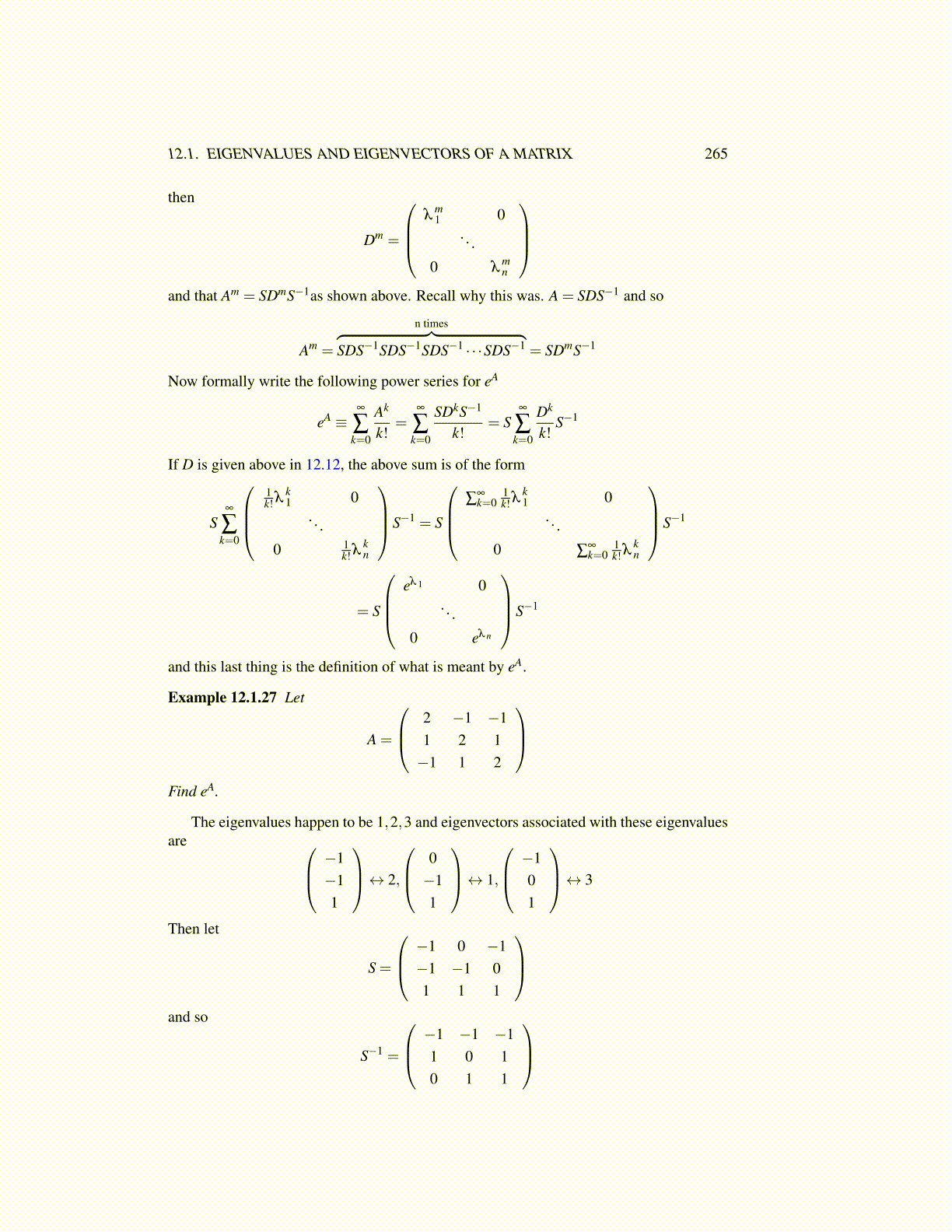
12.1. EIGENVALUES AND EIGENVECTORS OF A MATRIX 265
then
Dm =
λ
m1 0
. . .
0 λmn
and that Am = SDmS−1as shown above. Recall why this was. A = SDS−1 and so
Am =
n times︷ ︸︸ ︷SDS−1SDS−1SDS−1 · · ·SDS−1 = SDmS−1
Now formally write the following power series for eA
eA ≡∞
∑k=0
Ak
k!=
∞
∑k=0
SDkS−1
k!= S
∞
∑k=0
Dk
k!S−1
If D is given above in 12.12, the above sum is of the form
S∞
∑k=0
1k! λ
k1 0
. . .
0 1k! λ
kn
S−1 = S
∑
∞k=0
1k! λ
k1 0
. . .
0 ∑∞k=0
1k! λ
kn
S−1
= S
eλ 1 0
. . .
0 eλ n
S−1
and this last thing is the definition of what is meant by eA.
Example 12.1.27 Let
A =
2 −1 −11 2 1−1 1 2
Find eA.
The eigenvalues happen to be 1,2,3 and eigenvectors associated with these eigenvaluesare −1
−11
↔ 2,
0−11
↔ 1,
−101
↔ 3
Then let
S =
−1 0 −1−1 −1 01 1 1
and so
S−1 =
−1 −1 −11 0 10 1 1